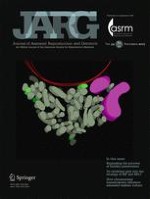Erschienen in:

28.07.2017 | Assisted Reproduction Technologies
Assisted reproduction and risk of preterm birth in singletons by infertility diagnoses and treatment modalities: a population-based study
verfasst von:
Galit Levi Dunietz, Claudia Holzman, Yujia Zhang, Chenxi Li, David Todem, Sheree L. Boulet, Patricia McKane, Dmitry M. Kissin, Glenn Copeland, Dana Bernson, Michael P. Diamond
Erschienen in:
Journal of Assisted Reproduction and Genetics
|
Ausgabe 11/2017
Einloggen, um Zugang zu erhalten
Abstract
Purpose
The purpose of this study is to examine the spectrum of infertility diagnoses and assisted reproductive technology (ART) treatments in relation to risk of preterm birth (PTB) in singletons.
Methods
Population-based assisted reproductive technology surveillance data for 2000–2010 were linked with birth certificates from three states: Florida, Massachusetts, and Michigan, resulting in a sample of 4,370,361 non-ART and 28,430 ART-related singletons. Logistic regression models with robust variance estimators were used to compare PTB risk among singletons conceived with and without ART, the former grouped by parental infertility diagnoses and treatment modalities. Demographic and pregnancy factors were included in adjusted analyses.
Results
ART was associated with increased PTB risk across all infertility diagnosis groups and treatment types: for conventional ART, adjusted relative risks ranged from 1.4 (95% CI 1.0, 1.9) for male infertility to 2.4 (95% CI 1.8, 3.3) for tubal ligation. Adding intra-cytoplasmic sperm injection and/or assisted hatching to conventional ART treatment did not alter associated PTB risks. Singletons conceived by mothers without infertility diagnosis and with donor semen had an increased PTB risk relative to non-ART singletons.
Conclusions
PTB risk among ART singletons is increased within each treatment type and all underlying infertility diagnosis, including male infertility. Preterm birth in ART singletons may be attributed to parental infertility, ART treatments, or their combination.











